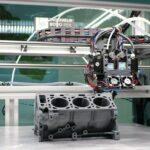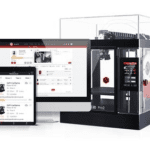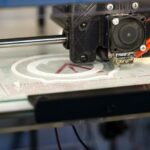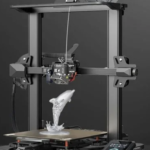
3D printing is still a relatively new technology; however, manufacturing and business processes are quickly becoming more efficient than ever before. This is because this innovative technology is revolutionizing how we manufacture objects. In this article, we’ll look at the latest 3D printing developments transforming the face of manufacturing in various industries.
According to a recent survey by Siemens, nearly half of all manufacturing companies globally have already implemented or plan to implement 3D printing technology within the next two years.
Why doesn’t everyone use 3d-printing to prototype?
 3D printing technology is fantastic and has changed the landscape of manufacturing and product development. So why doesn’t everyone use 3D printing for prototyping their products? There are a few reasons: cost, availability of machines, design skills, and material choices. Let’s explore each of these more.
3D printing technology is fantastic and has changed the landscape of manufacturing and product development. So why doesn’t everyone use 3D printing for prototyping their products? There are a few reasons: cost, availability of machines, design skills, and material choices. Let’s explore each of these more.
3D printing technology
 It has revolutionized manufacturing and product development, but not everyone uses it to prototype their products. There are a few reasons for this: 3D printing technology has revolutionized manufacturing and product development, but not everyone uses it to prototype their products. There are a few reasons for this:
It has revolutionized manufacturing and product development, but not everyone uses it to prototype their products. There are a few reasons for this: 3D printing technology has revolutionized manufacturing and product development, but not everyone uses it to prototype their products. There are a few reasons for this:
- 3D printers are still relatively expensive.
- The technology is still new and developing, so there are bound to be kinks that need to be worked out.
- Not everyone is familiar with how to use 3D printing technologies.
Cost: 3D printers can be expensive, so not everyone can afford one.

When it comes to 3D printing, many people still see it as a calling technology. One of the main reasons for this is cost. 3D printers can be expensive, so not everyone can afford one. This means that only a limited number of people still have access to this technology. However, it is slowly becoming more affordable as prices decrease and new technologies are developed.
Availability of machines: Not everyone has access to a 3D printer.
 Three-dimensional printing is still a niche technology because not everyone can access a 3D printer. The cost of these machines can be prohibitive for many people, and the learning curve can be steep. Additionally, only a limited number of materials can be used with 3D printers.
Three-dimensional printing is still a niche technology because not everyone can access a 3D printer. The cost of these machines can be prohibitive for many people, and the learning curve can be steep. Additionally, only a limited number of materials can be used with 3D printers.
Design skills: Some people may not know how to design products using 3D printing technology.
 Design skills: Some people may not know how to design products using 3D printing technology. However, there are plenty of ways to learn how to use this technology. For example, look for prototyping software that can be used for 3D printing or take an online course on the subject. Additionally, consider joining a local maker space or Fab Lab where you can access state-of-the-art equipment. And other like-minded individuals who are passionate about learning new things.
Design skills: Some people may not know how to design products using 3D printing technology. However, there are plenty of ways to learn how to use this technology. For example, look for prototyping software that can be used for 3D printing or take an online course on the subject. Additionally, consider joining a local maker space or Fab Lab where you can access state-of-the-art equipment. And other like-minded individuals who are passionate about learning new things.
Material choices: There are limited options for materials that can be used with 3D printers.
 If you’re looking for the newest, hottest technology, 3D printing probably isn’t it. The market for 3D printers is still pretty niche, and part of the reason is that there are limited choices for materials that can be used with them.
If you’re looking for the newest, hottest technology, 3D printing probably isn’t it. The market for 3D printers is still pretty niche, and part of the reason is that there are limited choices for materials that can be used with them.
 Most 3D printers only work with plastics or metals, which limits their potential applications. Newer printer models are beginning to experiment with more diverse materials like ceramics and glass. However, they’re still far from being able to print anything and everything.
Most 3D printers only work with plastics or metals, which limits their potential applications. Newer printer models are beginning to experiment with more diverse materials like ceramics and glass. However, they’re still far from being able to print anything and everything.
Trends in 3D-printing
Materials technology and the global market for the most promising new 3D-printing materials applications from 2021-2027. are the main topics of the just-released Global 3D Printing Materials Market Report.
According to the report, 3D printing is snowballing. In 2016, global 3D printing materials revenue was $16.6 billion, and it’s expected to hit $38.2 billion by 2027, making the market worth roughly $22.6 billion per year.
 The 3D-printing materials landscape is changing as new players enter the market. Traditional consumables manufacturers expand their product portfolios and expect increasing growth in 3D printing.
The 3D-printing materials landscape is changing as new players enter the market. Traditional consumables manufacturers expand their product portfolios and expect increasing growth in 3D printing.
Significant sales of 3D printers are fueled by growth in emerging economies. The market for 3D-printing materials is estimated to be worth US$15.88 billion in 2022.
3D printing technology has also been used to print out blood vessels, allowing doctors to see how blood flows through the body. But even these new applications aren’t limited to humans.
 Scientists are also experimenting with technology to help keep endangered species alive, like the northern white rhino. Whose very few members are supported in a laboratory by scientists in the hopes that they can one day begin to reproduce, presented in this review.
Scientists are also experimenting with technology to help keep endangered species alive, like the northern white rhino. Whose very few members are supported in a laboratory by scientists in the hopes that they can one day begin to reproduce, presented in this review.
Some of the most promising trends include materials already being used successfully in producing some 3D-printed products, such as ABS and PLA, bioprinting, high-performance plastics and metals, new biodegradable materials, conductive materials, functional materials (electronics and sensors), and new functional materials.
APPLICATIONS
 As mentioned above, the most promising applications of 3D printing are in personalized medicine and bioprinting, followed by biomanufacturing, industrial and manufacturing, aerospace and defense, energy, automotive, electronics and IT, and the environment. The personalized medicine market opportunity is expected to reach $1.8 billion by 2027, and bioprinting is predicted to become a $9 billion industry by 2027.
As mentioned above, the most promising applications of 3D printing are in personalized medicine and bioprinting, followed by biomanufacturing, industrial and manufacturing, aerospace and defense, energy, automotive, electronics and IT, and the environment. The personalized medicine market opportunity is expected to reach $1.8 billion by 2027, and bioprinting is predicted to become a $9 billion industry by 2027.
Conclusion,
You may not know it, but the story of manufacturing is changing. Thanks to 3D printing, the possibilities of a new manufacturing age are here.
Can You Help?
We don’t want to offend you, but we’re reaching out and asking for your help in leaving us a comment. It’s easy to do and only takes a few minutes. We appreciate your feedback and want to ensure your voice is heard. Thank you!
We only ask for reviews from all customers to improve our services.
Don’t you agree that reading reviews of a business’s services or products helps you make an informed decision?
Bullwinkle
